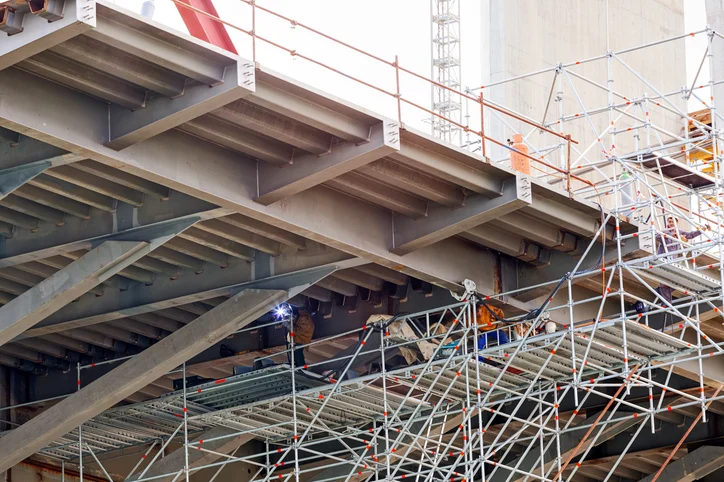When we think about major construction projects—towering skyscrapers, expansive bridges, or large commercial complexes—we often focus on the final product. However, behind the scenes, a complex network of temporary structures plays a crucial role in making these projects possible, safe, and efficient.
Temporary structures are non-permanent systems such as scaffolds, formwork, falsework, shoring, and access platforms that support various construction activities. Though they are removed after use, their function is anything but secondary. These elements provide critical support to crews, machinery, and materials throughout the build process.
So, how exactly do these temporary systems enable successful large-scale construction?
1. Ensuring Worker Safety and Accessibility
Safety is a top priority on construction sites, especially those involving tall or complex structures. Temporary structures such as scaffolding and stair towers provide safe, stable platforms for workers to reach difficult or elevated areas.
By offering dependable access routes and fall protection, temporary systems dramatically reduce the risk of accidents—especially when installed and inspected under the guidance of qualified engineers.
2. Supporting Concrete and Load-Bearing Construction
Temporary formwork and falsework are essential when pouring concrete for walls, columns, beams, and slabs. These systems hold the concrete in place until it gains enough strength to support itself. Similarly, shoring props up floors or walls during renovations or when adjacent structures are being modified.
Incorrectly designed or installed temporary supports can lead to concrete deformation or even collapse, making precision engineering vital.
3. Allowing Structural Modifications and Retrofits
In building renovations, structural changes, or seismic upgrades, certain load-bearing elements may need to be temporarily supported. Temporary shoring ensures the stability of these areas while permanent structural changes are being made.
Engineers must calculate loads and design systems that prevent unintentional shifts or failures, ensuring that the building remains safe throughout the transition.
4. Facilitating Specialized Equipment and Logistics
Large cranes, hoists, and machinery often require custom-built platforms or support frames for installation and operation. Temporary structures are designed to handle the heavy dynamic loads and vibrations associated with this equipment. They may also include custom access ramps, bridges, or storage staging areas—all tailored to the unique site constraints.
In the midst of these demanding environments, NadeauSDM temporary structure engineers provide the technical know-how and precision needed to ensure these systems are safe, code-compliant, and adapted to real-world site conditions. Their work is a key part of keeping complex construction projects on schedule and on budget.
5. Minimizing Disruption in Urban or Operational Settings
In busy cities or on active industrial sites, temporary structures can serve as barriers, tunnels, or protective enclosures to shield pedestrians, workers, and existing operations from construction hazards. These systems are often installed with minimal disruption and tailored to fit around roads, sidewalks, or utility lines.
6. Enabling Faster Project Completion
Time is money in construction. Well-designed temporary works improve efficiency by giving crews faster, safer access to critical areas. Modular or prefabricated temporary structures can be quickly deployed and adjusted, helping to accelerate project timelines without compromising on safety.
7. Adapting to Unpredictable Conditions
Construction sites often face unforeseen challenges—such as unstable soil, weather delays, or mid-project design changes. Temporary structures can be adapted quickly to provide additional support or access as needed. Their flexibility makes them indispensable tools for on-the-fly problem-solving.
Conclusion
Temporary structures are the silent enablers of major construction projects. From worker safety and concrete forming to access, protection, and logistical support, they form the backbone of a successful build process. With expert planning and oversight from firms like NadeauSDM, these systems become strategic assets—ensuring not just stability, but overall project success.

